The transport between Buda and Pest has always been extremely important, so there was a pontoon bridge here even in the Turkish era, but this structure was destroyed when Buda was taken back. However, after the expulsion of the Turks, there was no permanent connection between the two cities for a long time, as another pontoon bridge was opened only 255 years ago, in 1766.
What exactly is a pontoon bridge? It is a structure that rests on boats anchored in the river, i.e., the whole bridge floats on the water. A bridge does not require a foundation, major bridgeheads, which makes its installation simpler and cheaper compared to traditional bridges. There are, of course, disadvantages as well. In winter, in the case of an icy river, it must be taken out of the water because it is ruined by ice. It is a barrier to ship traffic, so if there is shipping on that river, they had to create a section of the bridge that can be opened.
Unfortunately, both disadvantages had to be considered between Pest and Buda, as the traffic on the Danube was lively and there was ice in the winter months - it was even more common in the 18-19th century than it is today.
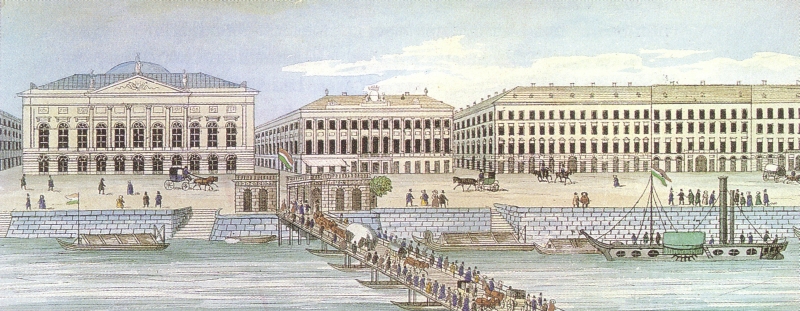
The pontoon bridge on a drawing by Carl Vasquez
When Buda was recaptured, as previously written above, the Turkish bridge was destroyed. The connection between the recaptured cities was provided by a special ferry, the reaction ferry, but by the middle of the 18th century this was no longer enough, and this was seen not only by the public of the cities but also by the government. On 21 July 1766, the Council of Governors, which practically acted as the government, called on the city of Pest to replace the reaction ferry for a pontoon bridge for the planned visit of Archduke Albert Casimir who was Maria Theresa's son-in-law and governor of Hungary, and who otherwise stayed in Pozsony (today's Bratislava, Slovakia). The city of Pest was called for by the government because, since 1703, the two cities had the right to organise the Pest-Buda crossing and the customs duty collected for it, so they also bore the cost of building the bridge. The bridge had to be assembled from ships in the Shipping Office's warehouses and was intended to be temporary from the outset, as the Council of Governors also ordered that the bridge components be returned to the same place after the Archduke's visit.
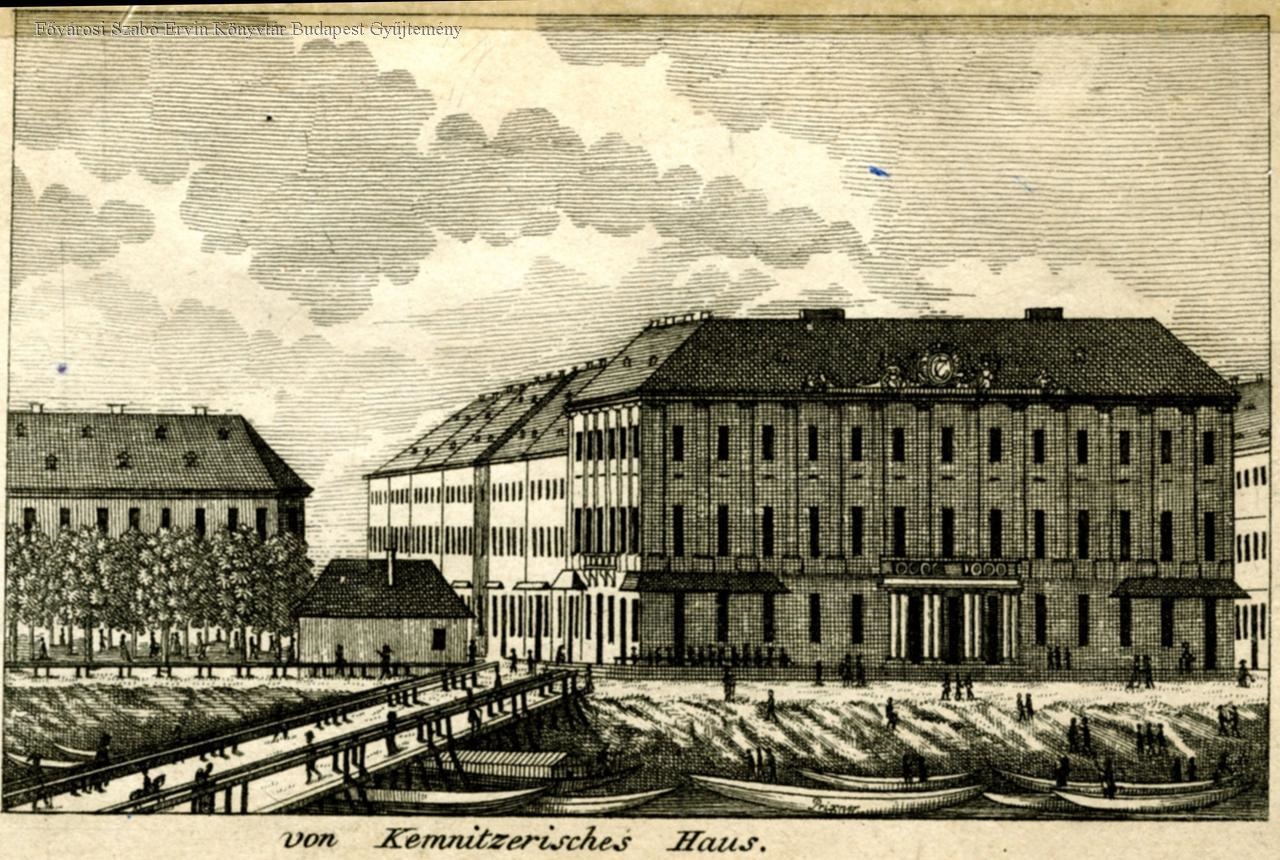
The pontoon bridge on an engraving in 1805 (Source: FSZEK Budapest Collection)
The Archduke arrived in Buda on 20 August 1766, with his wife, Archduchess Maria Christina (after whom Krisztinaváros was named). At that time, the pontoon bridge built between Pest and Buda was already standing, which was already opened on 1 August 1766.
The bridge crossed the river at today's Türr István Street and was demolished after the visit by the royal couple, as it was intended to be temporary.
However, it proved to be a useful and usable crossing, so in 1767, it was rebuilt permanently - that is, for the ice-free period - a little further away, in the line of today's Rudas Baths. Although the bridge did not stay there all year round, because if it was threatened by ice, it was taken out of the water but from then on, between Pest and Buda, it served reliably for decades. Although the bridge was built by the cities, it was leased to contractors.
The Pest-Buda bridge was a very good, attractive structure, which laid on 47 ships. Its length has changed throughout its history, as it has been relocated several times, once it led arched, once it led straight across the river, so its length changed between 350-420 metres. Its width was 9 metres. The bridge deck was illuminated with oil lamps, tasteful booths stood along the way, and a statue of St. John of Nepomuk, the patron saint of the bridges, was placed on the bridge. Several travellers remembered it with appreciation.
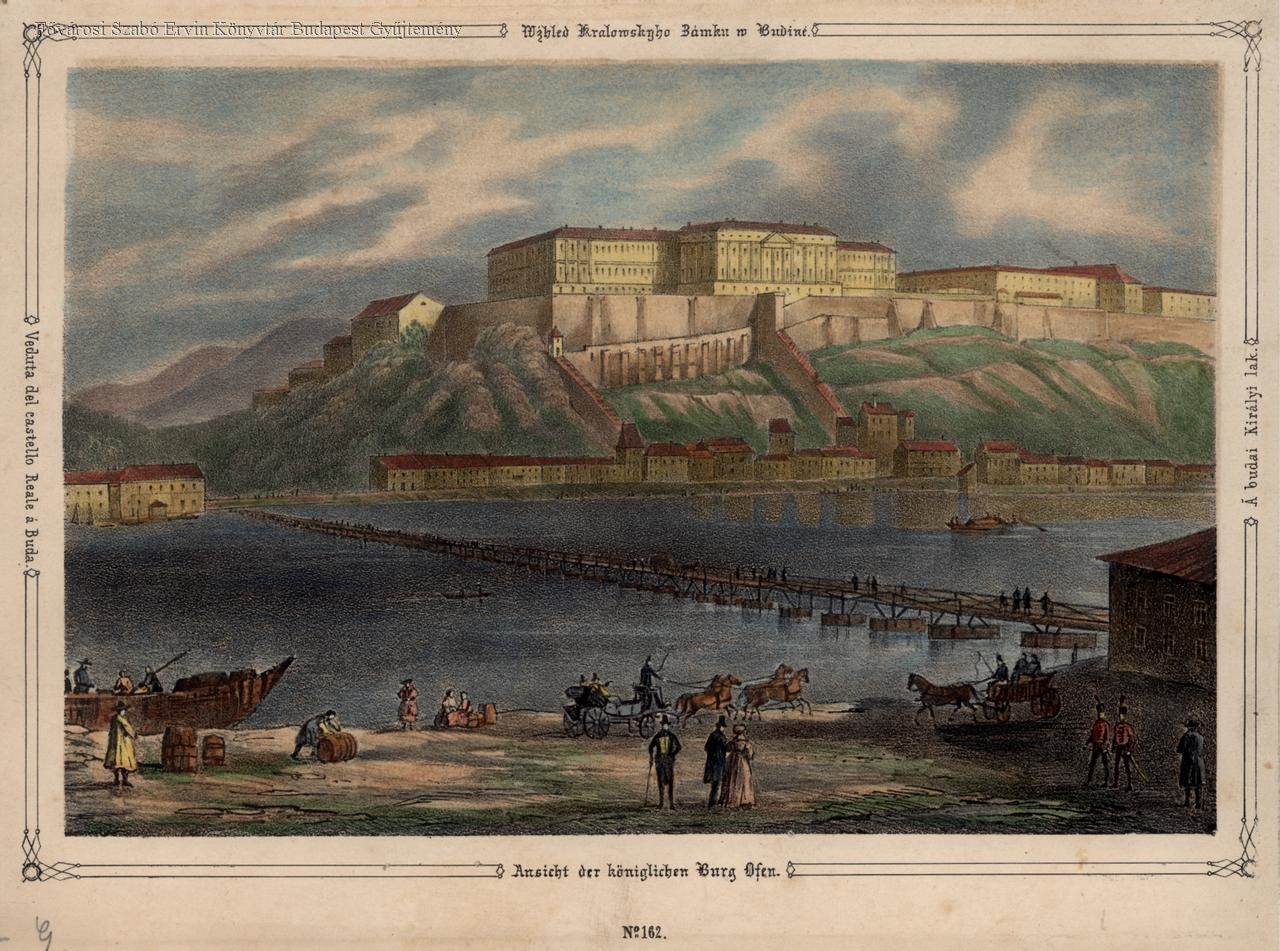
The pontoon bridge in the 1840s (Source: FSZEK, Budapest Collection)
The disadvantage was that it had to be dismantled in the winter and the middle had to be opened from time to time to allow the ships to pass. Such a case was described by Ignác Nagy in the Pesti Divatlap on 7 July 1844:
“Ah, here we are at the bridgehead! But what is it? our heads collide with a chain, the bridge is locked, there are many wagons in front of it, there are crowds of people yawning on it, and the money collectors are stretching out. Maybe something was wrong with the weak-legged bridge? Or did a storm tear the ships apart? Oh no, there is no question of these troubles now, but the bridge was opened so that some ships can sail under it comfortably. Let us step on the bridge. How many people want to go to Buda, and how many more want to hurry from Buda to Pest! we do not say much when we say that four thousand people are stranded on the bridge. Poor pontoon bridge, how bitterly it crackles under a heavy load .... "
The two cities generated very significant revenues from this bridge, tens of thousands of forints a year, and even more than 45,000 HUF by the mid-1840s, so that the nobles, intellectuals, the priesthood, the soldiers and their serfs enjoyed reliefs from customs. The crossing was also duty-free for city officials and citizens and their wives. But the crossing was also duty-free when people from Pest went to work in their vineyards in Buda and those who went to a wedding did not have to pay either. That is, almost no one paid, but the business was still profitable.
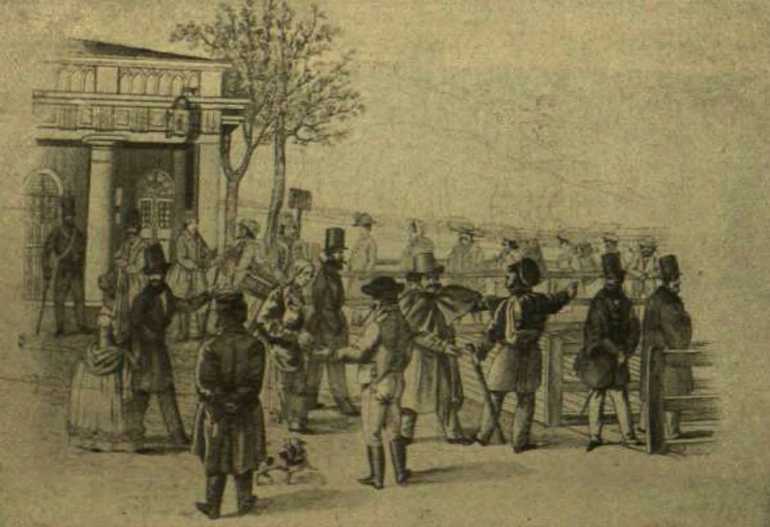
Pest bridgehead of the pontoon bridge (Vasárnapi Ujság, 1 February 1914)
The loss of the bridge, if we put it polemically, was caused by an impatient count who could not wait for the bridge, which had been dismantled due to ice, to be reassembled. A few years after the inconvenience, he started a movement to build a permanent bridge instead of a pontoon bridge, and eventually achieved his goal, as the pontoon bridge was finally dismantled in 1850 because by then, the Chain Bridge was completed. And the count was none other than István Széchenyi.
Of course, the story is more complicated than this, since as early as 1784, 18 years after the pontoon bridge was built, official bodies and self-appointed bridge designers began to work on the idea of a permanent bridge. However, it would not have been technically possible to build a permanent bridge between Buda and Pest until the middle and end of the 1830s, until then the only technically reliable device was the pontoon bridge.
Cover photo: Miklós Barabás also painted the pontoon bridge in 1843

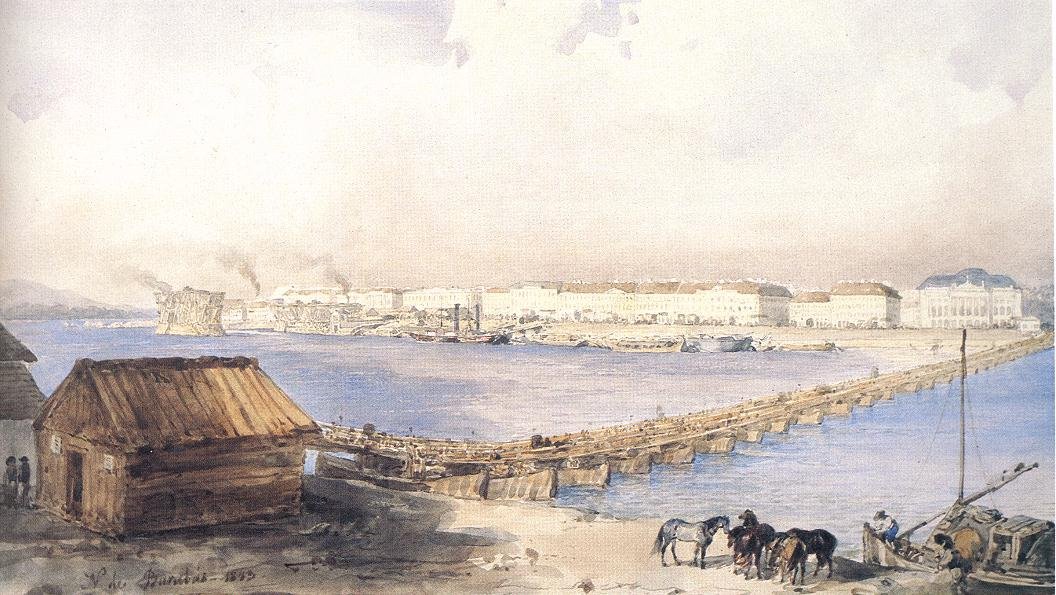


































Hozzászólások
Log in or register to comment!
Login Registration